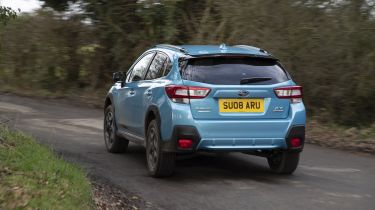Subaru XV hybrid MPG & CO2 emissions
Toyota-like hybrid system doesn’t result in Toyota-like economy – this is somewhere the Subaru can't compete
| Fuel economy (combined) | Fuel economy (high) | Fuel economy (low) | CO2 emissions |
|---|---|---|---|
| 36mpg | 43mpg | 32mpg | 180g/km |
The 'e-Boxer' hybrid system allows the XV to run for around a mile under electric power alone at speeds of up to 25mph, with the engine used to charge the battery when travelling above that threshold – in similar fashion to a Toyota Prius. A regenerative braking system also helps put energy back into the battery when slowing down: this means there’s little ‘bite’ to the brake pedal, but it still feels natural and linear to use.
Subaru XV hybrid MPG & CO2 emissions
All this results in claimed fuel economy of 36mpg and CO2 emissions of 180g/km, although neither of these figures are that impressive given that the Kia Niro, Toyota C-HR and previous-generation Hyundai Kona Hybrid are all cleaner and manage well in excess of 50mpg.
Even the Subaru's 'high' rating (reflective of gentle driving) of 43mpg doesn’t get close to that, while the official CO2 figure results in a fairly hefty company-car tax bill – something hybrids typically avoid.
Private buyers won't save much on annual VED (road tax) either; being hybrid means just a measly £10 yearly discount. Even top-spec Premium cars cost well under £40,000 though – you'd have to be going great guns to push the XV beyond the threshold for luxury car tax. The same is true for rivals, however.

